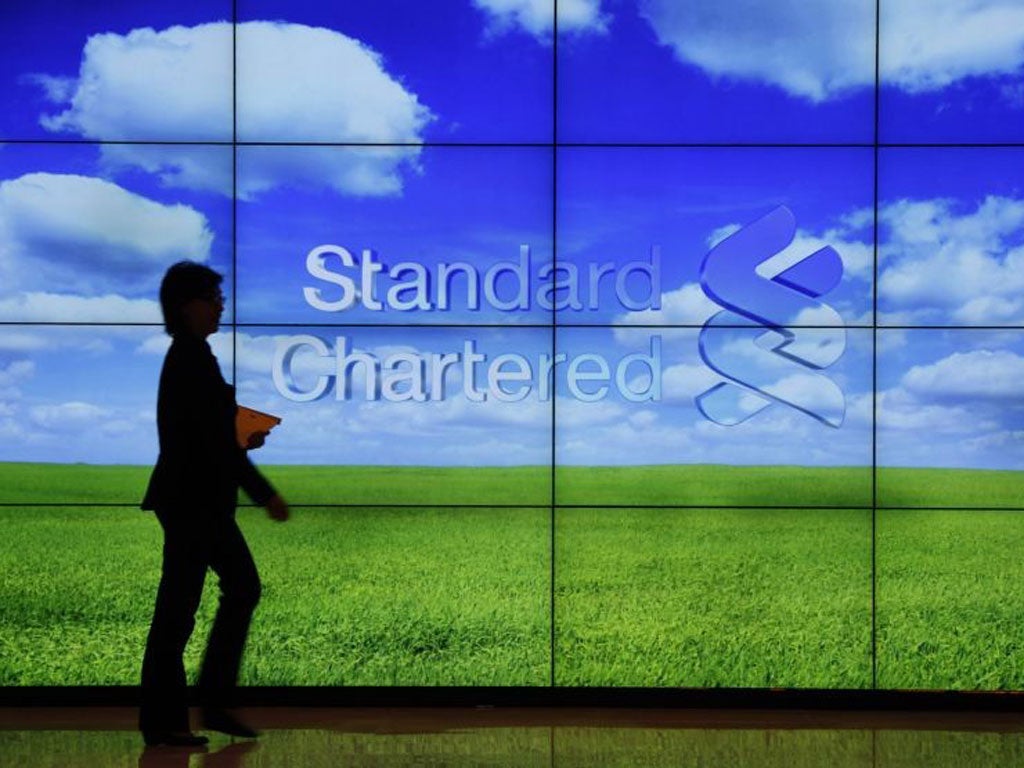Standard Chartered looking towards brighter future but still faces bumpy ride
Bill Winters has got bank back in the black after making heavy losses in the second half of last year

Your support helps us to tell the story
From reproductive rights to climate change to Big Tech, The Independent is on the ground when the story is developing. Whether it's investigating the financials of Elon Musk's pro-Trump PAC or producing our latest documentary, 'The A Word', which shines a light on the American women fighting for reproductive rights, we know how important it is to parse out the facts from the messaging.
At such a critical moment in US history, we need reporters on the ground. Your donation allows us to keep sending journalists to speak to both sides of the story.
The Independent is trusted by Americans across the entire political spectrum. And unlike many other quality news outlets, we choose not to lock Americans out of our reporting and analysis with paywalls. We believe quality journalism should be available to everyone, paid for by those who can afford it.
Your support makes all the difference.In many ways Standard Chartered could be seen as HSBC’s mini me
Like its big brother it is based in the UK but the majority of its earnings come from what we still refer to as “emerging markets”. Even though Asia’s tiger economies “emerged” a long ago and are now looking at the West from their rearview mirrors.
Like its big brother Stan Chart has endured considerable pain in recent years, finding itself in the cross hairs of regulators while attempting to navigate through some extremely difficult financial and economic waters.
Like HSBC its latest results don’t look terribly pretty on the face of it, but the shares have bounced all the same.
That’s where the similarity ends. As I wrote earlier today, HSBC’s business model looks to be fraying. Standard Chartered’s all but fell to pieces.
Having belatedly recognised the need for a shake up, it instituted a purge Stalin would have been proud of. That extended to the very top with the appointment last June of a new chief executive, Bill Winters. José Viñals, a senior executive with the International Monetary Fund, will replace Sir John Peace as chairman in December after a 17 month search.
Hopefully they will learn from the mistakes of their predecessors. Under the previous chief executive, Peter Sands, the bank got terribly complacent. It started to believe the hype when analysts referred to it as the world’s best bank and was slow to act when the wheels started to fall off.
Now there are reasons to believe that it could be in a position to motor again, although it’s still closer to the back of the grid than the front and it may take some time for that to change.
For a start it hired the right man to lead the turnaround in Mr Winters, who was once seen as the heir apparent at JP Morgan (they have life expectancies that match those of Game of Thrones characters).
He is one of the world’s more respected bankers and has managed to steady the ship. While the first half profit of $893m (£671m) that he unveiled is less than half last year’s $2.1bn it compares rather more favourably to the $3.6bn loss recorded in the second half of 2015.
The so called “underlying” numbers - which strip out one off nasties and concentrate on the performance of banks' core businesses - read $1.8bn profit for the first half of 2015, $990m loss for the second, $994m profit this time. Income was up, costs and impairments were lower.
As with HSBC, the bank is dropping some of its profitability targets (this seems to be a theme with banks at the moment). It continues to face a tough trading environment, with low interest rates and economic and political uncertainty gripping the world.
How you view Stan Chart’s future still depends on whether you live life as an optimist or a pessimist. Moreover, there is also trouble looming with regulators. The bank has a dropped some clients, and been dropped by others while enacting a clean up. But there will still be a price to pay for past sins.
Still, Mr Winters appears to recognise the bank’s problems and is working to develop solutions. His investors now seem ready to join him for the ride while he does this. But it promises to be a bumpy one.
Join our commenting forum
Join thought-provoking conversations, follow other Independent readers and see their replies
Comments